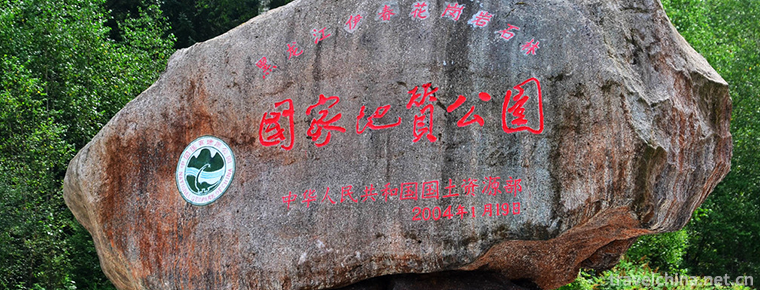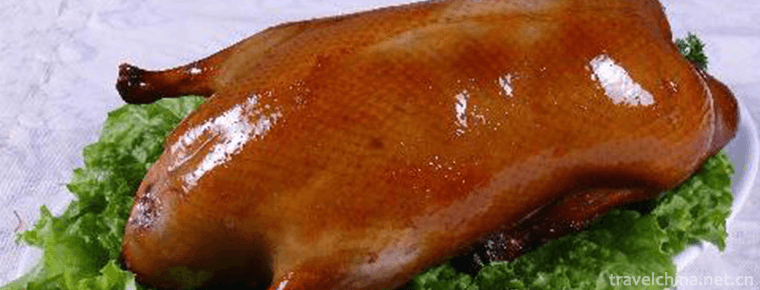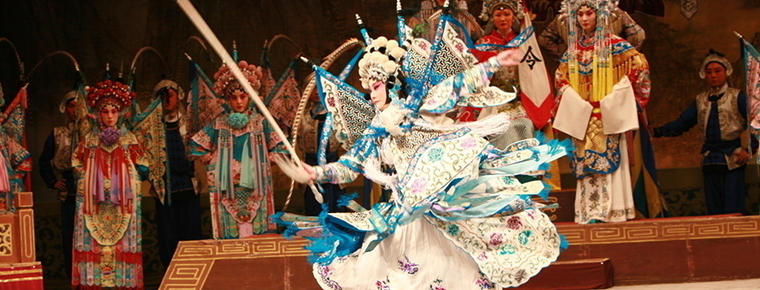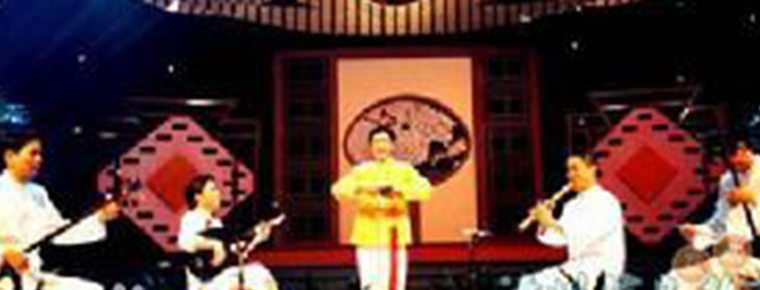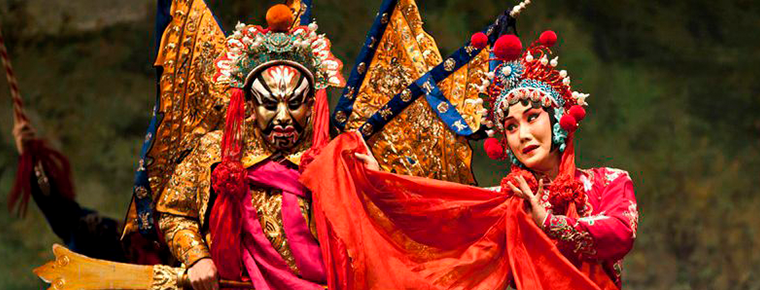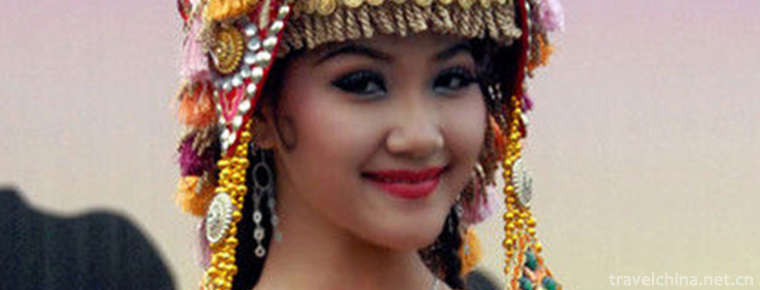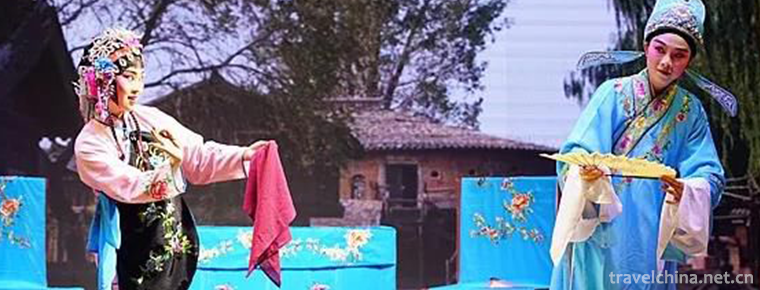Chentang Sherpa Singing and Dancing
Chentang Sherpa Singing and Dancing
Chen Tang Sherpa Song and Dance is a traditional folk song and dance in the Sherpa community of Tibet. Accompanied by "Zhanlie" (Six Strings) and "Biwang" (Huqin). Generally, it is held on festivals, meetings, holidays and visitors'visits. The venues are of unlimited size. Men play the piano and play the huqin, while women dance around the bonfire with music.
On May 23, 2011, the "Chen Tang Sherpa Song and Dance" declared by Dingjie County of Tibet Autonomous Region was listed in the third batch of national intangible cultural heritage list with the approval of the State Council.
historical origin
Sherpas live mainly in the alpine areas of northern Nepal. The Sherpas in China mainly live in Lixin Commune (including Xuebgang) at Zhangmu Port on the Sino-Nepalese border and in Chentang District of Dingjie County. There are more than 1200 people living in our country. The grammatical structure of the Sherpa language in Lixincun is basically the same as that of the Tibetan language. The Sherpa language in Chen Tang is quite mixed, including Tibetan, Nepalese and local languages.
Sherpas have only names, no surnames. Their names are similar to those of Tibetans, but they do not have house names. Caste. There are five Sherpa castes in Lixin Village, namely Selba, Garza, Salaga, Jamba and Ongba. Chen Tang is divided into two kinds, namely Tigawa and Congbawa.
artistic characteristics
Tangshaerba singing and dancing is a kind of self-entertaining folk collective singing and dancing which has a long history and is deeply loved by Sherpa people in Chen Tang Town, Dingjie County. The accompanying instruments are "Zhanlie" (Six-string Qin) and "Biwang" (Huqin).
The majority of singers and dancers are women. Generally, it is held on festivals, meetings, holidays and visitors'visits. The venues are of unlimited size. Men play the piano and play the huqin, while women dance around the bonfire with music. When singing and dancing, people put their arms around each other in a circle or semi-circle, singing one song and the other. At the beginning, it sings and dances gently, then moves around with a slow melody, then speeds up gradually to the mid-board dance, then to the Allegro. At this moment, with the dancer's voice, the dance reaches its climax, and finally ends in a cheerful and enthusiastic atmosphere.
When singing and dancing, women should dress up: wear black "Shu Shu". They wear hats decorated with flowers and peacock feathers on their heads. They wear necklaces with more than 200 silver rings around their necks, six small silver strings on their chest, silver belt around their waists, big white conch on their wrists, Aaron on their ears and Gawu (gold and silver ornaments) on their breasts. The jewelry is shining, tinkling and very touching when dancing.
Dance emphasizes gesture, footwork and waist, hip swing and bending. The lyrics are divided into traditional words and new words. The traditional lyrics mainly include ancient legends, farming and animal husbandry skills, religious carols, architectural techniques, etc. The newly compiled lyrics mainly praise the beautiful scenery of mountains and rivers and love between men and women. In addition, they also contain satire, humor and admonishment. The lyrics of the songs are mostly Tibetan, including six, seven, eight and so on. The songs have four, six, eight or more sentences and multi-paragraph styles.
Sherpa Marriage Custom
Sherpas have no words, and singing and dancing carry too much history of Sherpas. Even living in a closed mountain, Sherpas still use moving Sherpa songs and dances to show their love for life. All the good things in the world are the objects of their singing and dancing. They will also hold Sherpa's unique Manga wine to welcome guests from afar. Chentang Sherpa singing and dancing is deeply rooted in the local people, and is a popular singing and dancing variety with strong regional characteristics in Xigaze area.
On May 23, 2011, the "Chen Tang Sherpa Song and Dance" declared by Dingjie County of Tibet Autonomous Region was listed in the third batch of national intangible cultural heritage list with the approval of the State Council.
Inheritance significance
Sherpas have no words, and singing and dancing carry too much history of Sherpas. Even living in a closed mountain, Sherpas still use moving Sherpa songs and dances to show their love for life. All the good things in the world are the objects of their singing and dancing. They will also hold Sherpa's unique Manga wine to welcome guests from afar.
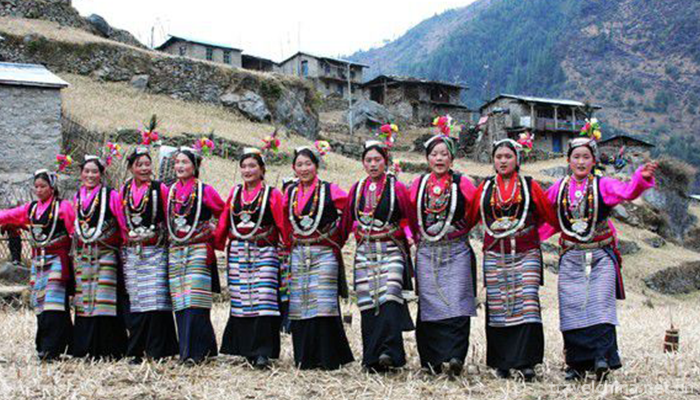
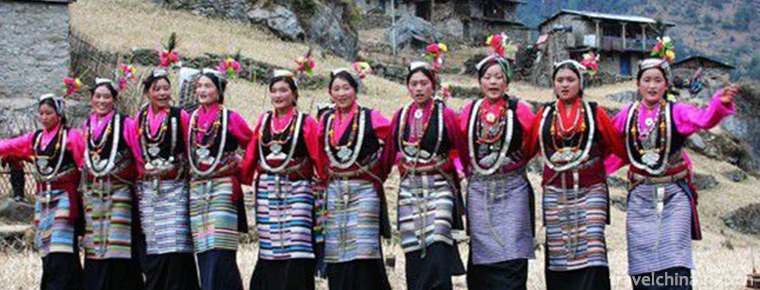
Chentang Sherpa Singing and Dancing
-
Yibin burning Noodles
The Yibin burning Noodles is one of the most distinctive traditional snacks in Yibin
Views: 426 Time 2018-10-12 -
Martial Art
Wushu is a technology inherited from ancient military wars. Martial arts can strengthen the body and defend the enemy
Views: 291 Time 2018-11-13 -
Tangwang River Linhai Qishi Scenic Area
Tangwanghe Linhai Qishi Scenic Area is located in Tangwanghe District, Yichun City, Heilongjiang Province.
Views: 168 Time 2018-12-05 -
Pot fried chicken
Guguo fried chicken is a local traditional dish in Changshu, Jiangsu Province, which belongs to the Su cuisine family. Located at the foot of Yushan Mountain in Changshu
Views: 281 Time 2019-03-25 -
Traditional drama
Chinese drama mainly includes opera and drama, and opera is the traditional Chinese drama. After a long period of development and evolution, Baihua Garden of Chinese opera has gradually
Views: 174 Time 2019-04-21 -
Brocade song
Brocade song, formerly known as Gezi or Shijin song, is also called begging tune. It was named Jinge in 1953. This is a form of singing accompanied by instrumental music.
Views: 347 Time 2019-05-07 -
Beijing opera Peking Opera
Peking Opera, once known as Peking Opera, is one of the five major Chinese operas. The setting lays stress on freehand brushwork. The tone is mainly Xipi and Erhuang
Views: 222 Time 2019-05-07 -
Kirgiz costumes
"Kirgiz" means the people who live on the cliffs. Another saying is that "Kirgiz" are forty girls. This statement is wrong. Most of the Kirgiz people live in Xinjiang's Kizilesu Au
Views: 280 Time 2019-05-09 -
Pingnanping Opera
Pingnanping opera is a kind of traditional opera with a history of 400 years. As the predecessor of Fujian opera, the main features of the opera are that Taobai singing uses Fuzhou Mandarin, the front
Views: 365 Time 2019-06-09 -
Shouning North Road Drama
Shouning North Road Opera, commonly known as Fujian Random Bomb and Hengshao Opera, came into being after Random Bomb entered Fujian in the mid-Qing Dynasty, such opera troupes as road work, off-road
Views: 153 Time 2019-06-15 -
Daci Temple
Daci Temple, also known as the ancient great saint CI temple, is located in the first section of Dongfeng Road, Jinjiang District, Chengdu City, Sichuan Province. It was built between the 3rd and 4th centuries AD, and is known as "the first jungle of the Sinian".
Views: 116 Time 2020-11-05 -
Neijiang geographical environment
Neijiang City is mainly hilly, surrounded by low mountains in the southeast and southwest. About 90% of the hills are between 350 and 450 meters above sea level. The geological structure is a part of the Neocathaysian subsidence zone with small fold fault scale
Views: 116 Time 2020-12-16


